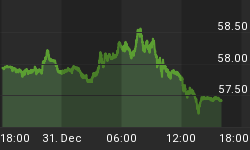There are hundreds upon hundreds of gold stocks listed on the US/Canadian exchanges. This may seem as an advantage at first, but in fact, this overabundance is a challenge for ordinary investors with only limited time on their hands.
We decided to get back to the basics which should be of benefit to both new and experienced investors in the precious metals stocks. To give some order to the madness, we have organized the various groups of gold stocks into the shape of a pyramid.
The key to maximizing profits while lowering risks is to understand which group of gold stocks to invest in and at what time.

At the top of the pyramid are the major gold producers, Barrick Gold, Goldcorp, Newmont Mining and a dozen others. Already with multi-million ounce annual production, they have little possibility for substantial internal growth. In valuing major and mid-tier producers, common valuation techniques are used and risks are well known. These companies are widely covered by brokerage houses and other institutionals.
At the base of the pyramid there are numerous early exploration companies with land claims and some sample/drilling results. Valuation of these stocks is very difficult, if not impossible. Almost the entire entity value lies in its management's track record and expertise. In case of a gold discovery, large profits can be made on these stocks irregardless of the gold market conditions.
In a long term gold bull market however, it is unnecessary to speculate in this area as there are numerous other opportunities in the more established companies. Concentrating on the four groups in the middle of the pyramid eliminates a significant amount of risk associated with resource exploration but leaves a lot of room for growth.
It is important, however, to clearly distinguish between each group. First, different groups carry different risks and rewards for investors. By understanding such factors, investors can gain better knowledge of how to better structure their portfolio while taking into account their appetite for risk. In addition, by comparing group valuation levels, investors can make decisions about how to reallocate their funds from one stock group to another.
To better understand the driving forces behind gold stocks, Resource Stock Guide (RSG) created unique indices that assemble each group/type of stocks into a corresponding index. We say "unique" because every other widely followed index (XAU, HUI, GOX) tracks almost the same stocks in different combinations and does not reflect the internal picture of the large gold mining sector. Sometimes they even distort the picture, as is the case with XAU, where the index's largest component and also the biggest winner, Freeport-McMoRan (FCX), has around 90% of its reserves in copper, not gold.
The performance and composition of each conventional gold index is very similar. Not so for the RSG Indices. Notice the differences in performance since 2006.

Exploration II companies, that in general have the best growth stories, have been clear leaders since 2006, making investors 90%. Over the last 12 months they are up 45%, while the price of gold is essentially flat. The Exploration II Index has now surpassed its May 2006 blow-off top to reach all time highs. It remains our favorite.
The Gold Benchmark Index, which contains the highest quality mid-size gold producers and is used as a point of reference in our valuation analysis, is up 13% since last July. Junior Producers with better internal growth but similar production cost pressures marginally outperformed the Benchmark.
Exploration I index is the usual latecomer to the bull market party. Once investors become more optimistic about the gold boom, Exploration I companies will do very well, probably better than any other group. It is important to get positioned in the right Exploration I stocks at the right time.
To sum it up, knowledge of gold stock classifications and awareness of the best time for each group are important guides for prudent investors.
















